
I’m a firm believer in teaching the basics, giving you the tools that you crave, to enable you to improve your skills so that they will take you to whatever level you want to reach. But I also believe in having fun. Not only do artists like to draw cool characters, but the reading public loves to buy manga graphic novels for the cool characters. In other words, if you’re having fun, the reader is having fun, too. Therefore, we’ve got to create some great occult-and-horror character types—and there are all sorts. This chapter introduces the vampire and winged characters that are so popular in the manga occult-and-horror genre.
Psycho, street trash, sociopath, troubled youth. Yeah, he’s all of that. Then there’s one more diagnosis that doesn’t appear in the Diagnostic and Statistical Manual of Medical Disorders: Nosferatu. Sometimes, vampires double as outcasts, rebels, and punks. They live a lonely life, on the fringes of society. They’re bands of misfits, cursed by their insatiable hunger. Don’t push them too far, or you might just end up getting bitten.
Give this type of character an outsider’s look: an earring, a gold chain, an opened shirt—anything that would make it impossible for him to get a corporate job—but nothing so in-your-face that it would turn him into an ugly, repulsive character (such as spikes in his chest or a large facial tattoo, for example).



To create the bird’s-eye angle, keep in mind these key points: Have the head overlap the body (don’t leave space between the chin and the far shoulder). Show the area from the collarbone to the back of the neck. Have the near arm overlap the rib cage. And finally, position the feet at different levels, with the farther one appearing higher up than the near one.
The vampire queen is surrounded by her lavish and generous wings as if embraced by a luxurious cape. She must be enthrallingly beautiful and irresistibly seductive. Vampire women can be angry, aloof, cute, or cunning, but they are always attractive—and often downright gorgeous. Before you begin working on the ornate hairstyle and batlike wings, first draw an attractive human female figure in the pose you want. Then turn her into a vampire. Don’t start her off as a vampire or you’ll lose the importance of the figure drawing.

If you feel comfortable doing so, you can simplify the form by drawing the upper body as two sections: torso and hips. But if you have trouble with that, then go back to the original method covered in the first chapter, dividing the body into three sections: chest, midsection, and hips.


The high boots, like high gloves, are a good choice for evil characters. Provocative clothing is often worn by “bad girl” types. She does this to rattle the men she’s trying to seduce, to get them off their game. She’ll use every trick she has to steal a soul. A man must be very careful around her type. Remember, she has survived hundreds of years through her wiles and cunning. Although her face seems innocent, her heart is as cold as ice.
Pretty, not too gothic, and teenaged, the romantic vampire is like the girl next door. She’s sweet, a little bit shy, and nice to talk to—and if given the right opportunity, she will kill you. Okay, so there are a few differences. The clue that’s she’s not actually the girl next door is her hair: Anyone who can trip over her own hairdo is of the dark realm.
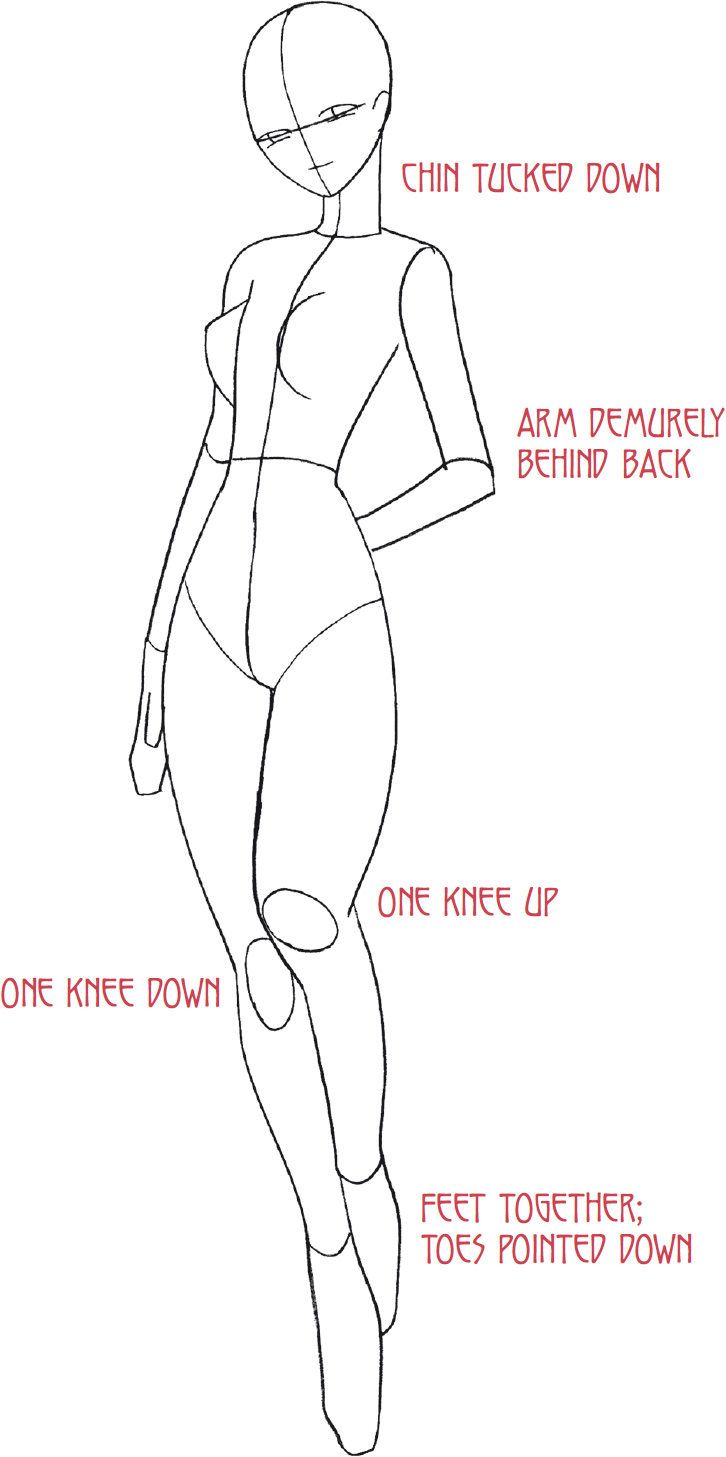
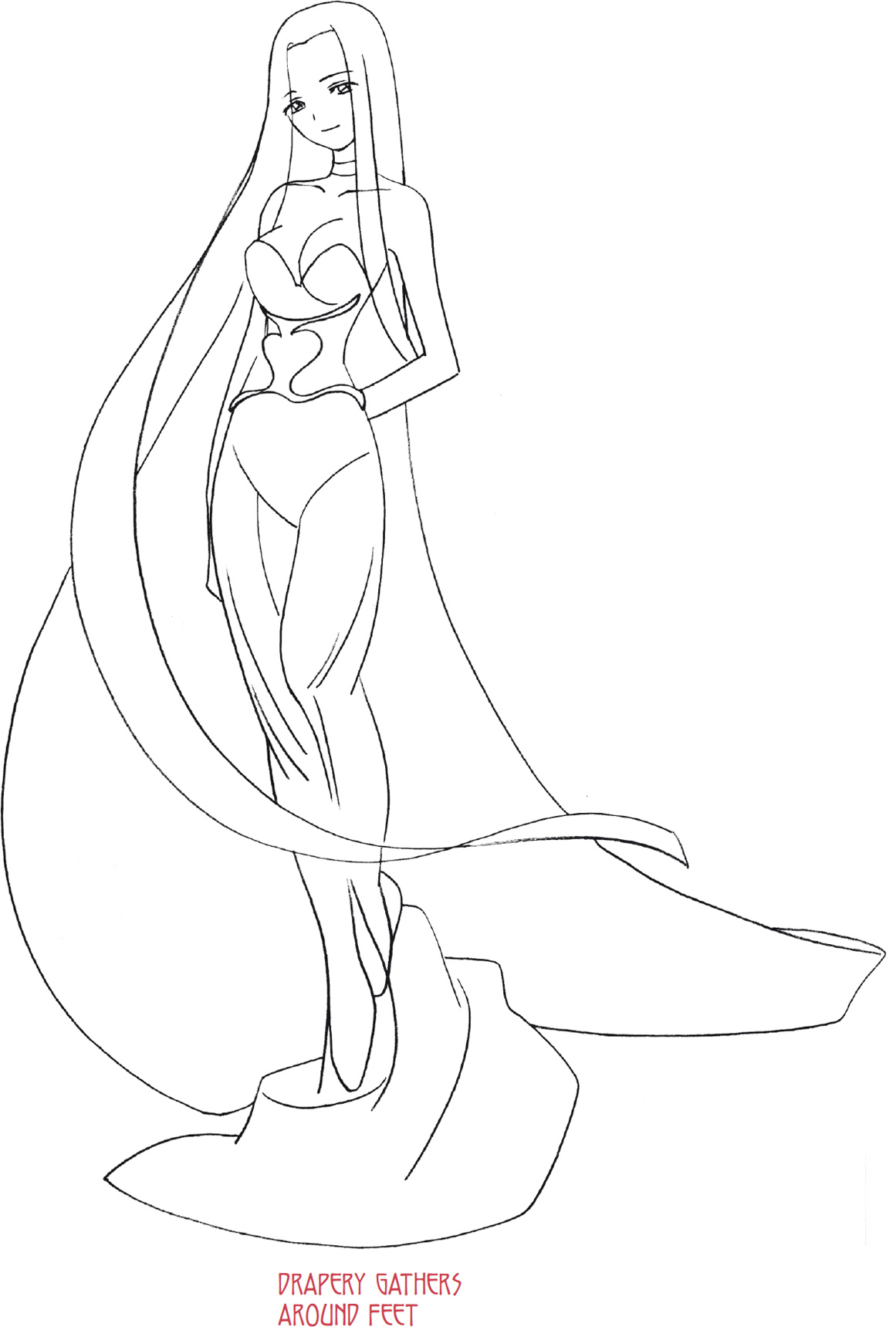

The legend of the dashing vampire owes its roots to the story of Count Dracula. The noble count was born of aristocracy in a castle in Eastern Europe in the mountains of Transylvania. He was charming, elite, debonair, moneyed, and had a wicked secret: He was one of the living dead. Fast-forward to today: Some stories keep the aristocratic dress and the castle setting front and center. Some choose to leave them aside. But even the ones that toss them in favor of modernity often keep an archetypal remnant: the aristocratic cape and ascot and oversized shirt cuffs. The glamour vampire retains some of the dress from a time long ago, when vampire meant nobility, and the word castle meant dungeon for those who tempted fate.

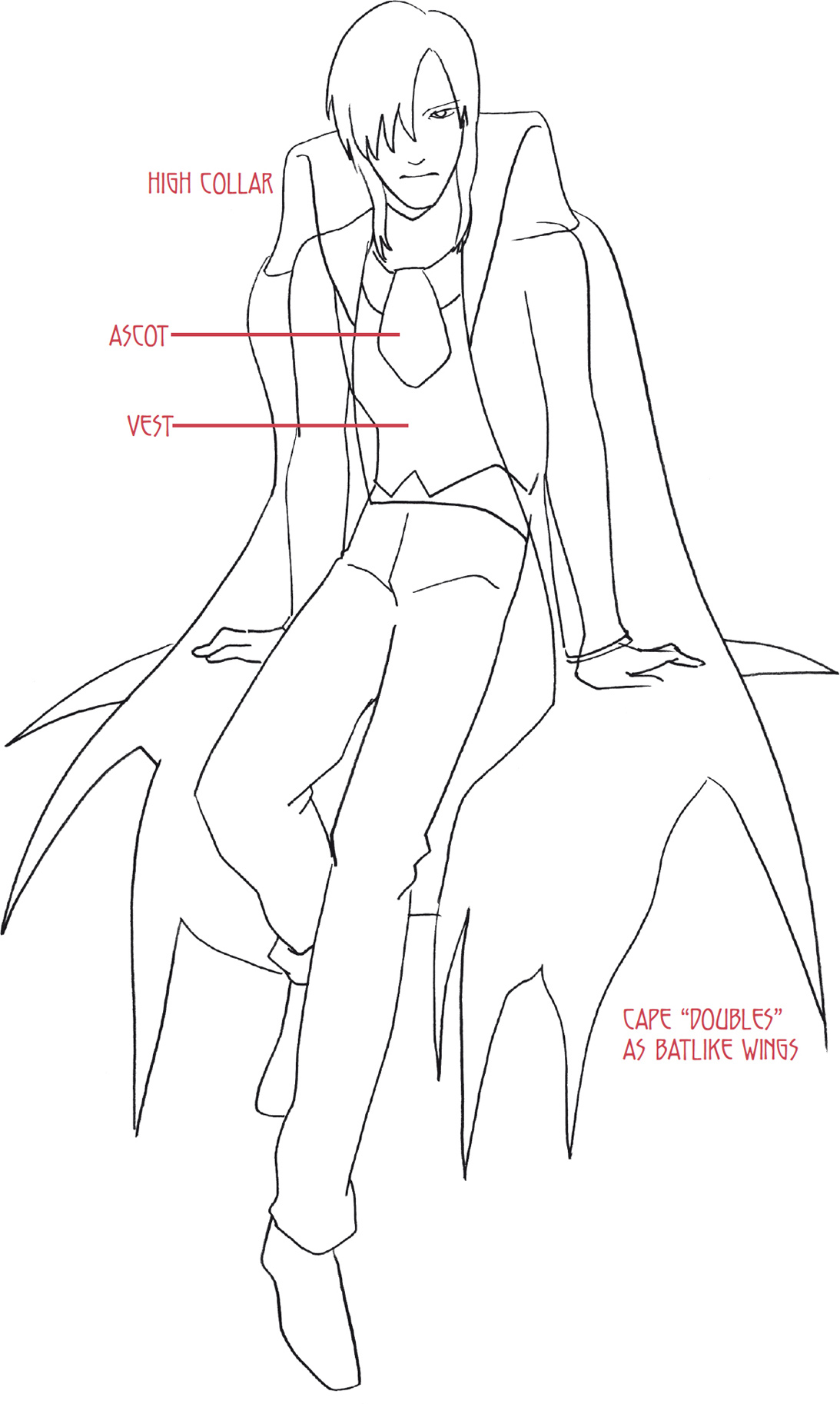

Hey, we all gotta start somewhere. Why wait until you’re out of high school to study the ways of darkness? Some manga girls get an early jump on it. They’re vampirettes. At this stage, vampire tweens are quite similar to manga magical girls—it’s just that they’re in the occult genre, while the others are in the fantasy genre. They both like candy bars, boys, and music. When they get older, they’ll realize just how stupid teenage boys are. That goes for the human girls, too.



The young vampire’s costume can be spooky and black, but it doesn’t have to be. However, there needs to be some kind of vampire motif, and here, the pet bat does the trick. This poor little vampire bat isn’t having as much fun as its owner.
Chibis are extremely cute and round little characters, and no one is terribly frightened by them. Sometimes, chibis are featured as vampires in humorous occult-and-horror stories. Often, these stories feature an all-chibi cast.
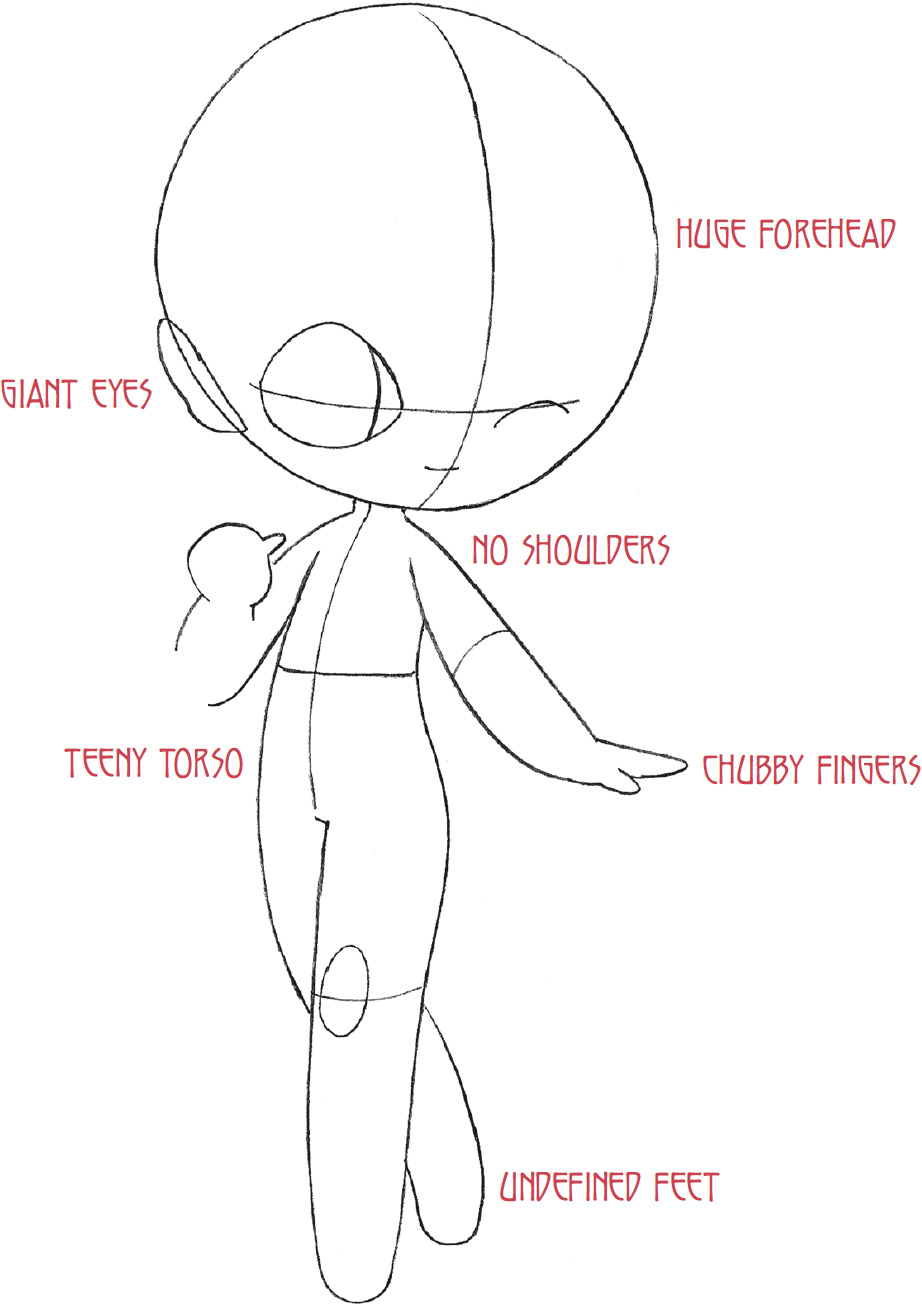


Believe me, you’ll need to pray if you see these characters coming at you. The wings of occult-and-horror characters never look static. They are expressive appendages. They can fold up, envelop a character, or spread out to span an entire page.
Wings come in many varieties. The most popular is the skin/ skeleton type based loosely on bat wings but borrowing, to some degree, from prehistoric birds like the pterodactyl, which was a flying predator. Some wings have a claw accent, like a “thumb,” at one joint, while others have layered feathers. This style is used more on “dark angel” character types than on vampires.
Wings also provide added degrees of grace, power, and stature to an occult figure. They increase the overall height of the character and serve to create a much longer shadow, which can be cast upon those standing nearby with intimidating results.
Unlike with other parts of the body, for which you begin by drawing the overall outline, with wings you should always start with the simplified skeleton. That’s because the skeleton is often a visible part of the wing. The angles will be lost if you get too vague in the wing anatomy here. Don’t get too cartoony. The good news is that once you understand the basic anatomy of the wing—and it’s not that difficult—it will all fall into place.
SKIN WINGS (FOR VAMPIRES AND DEMONS)
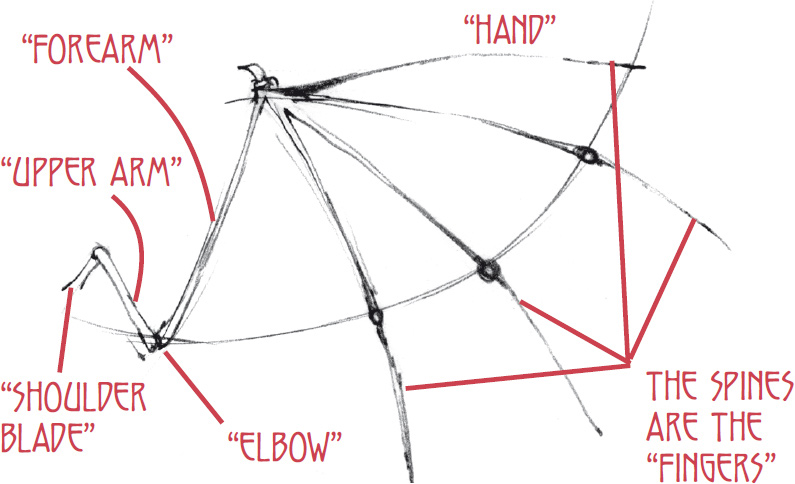

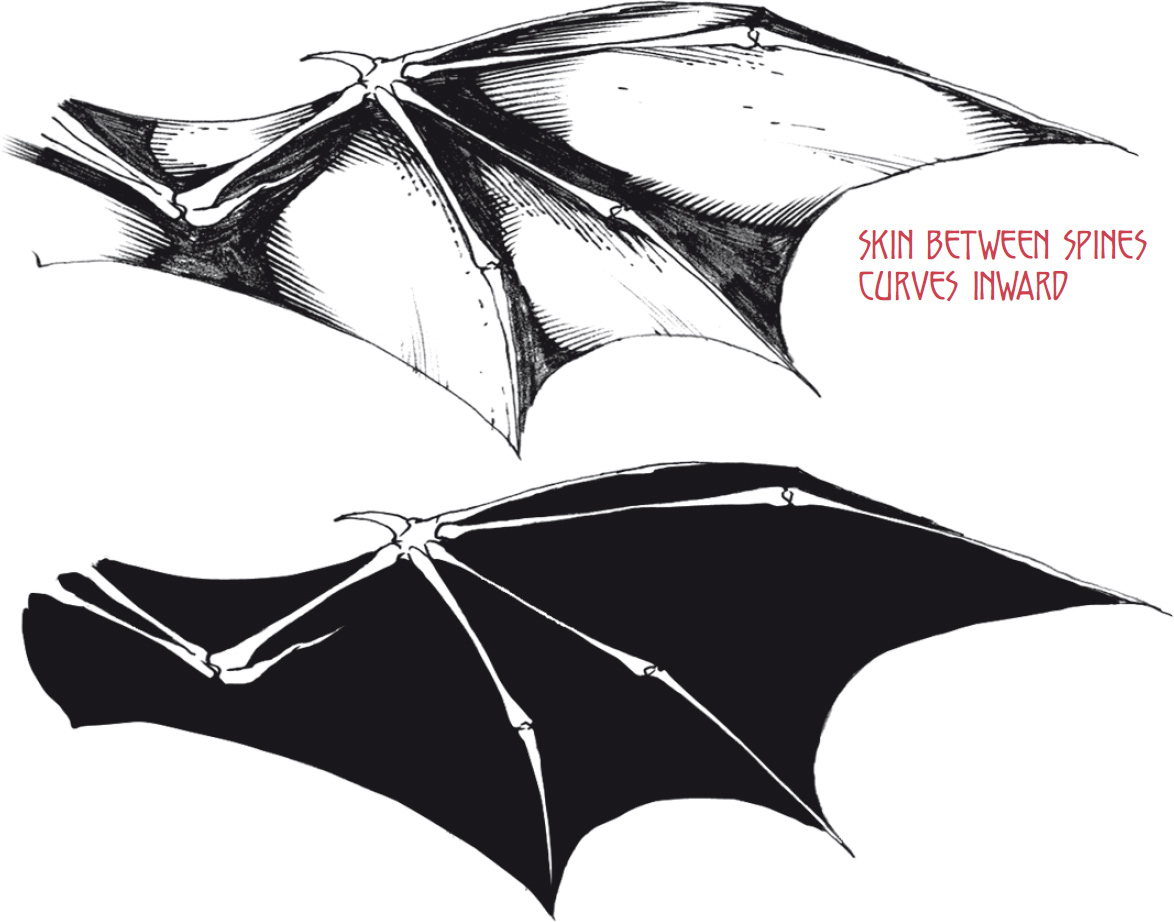
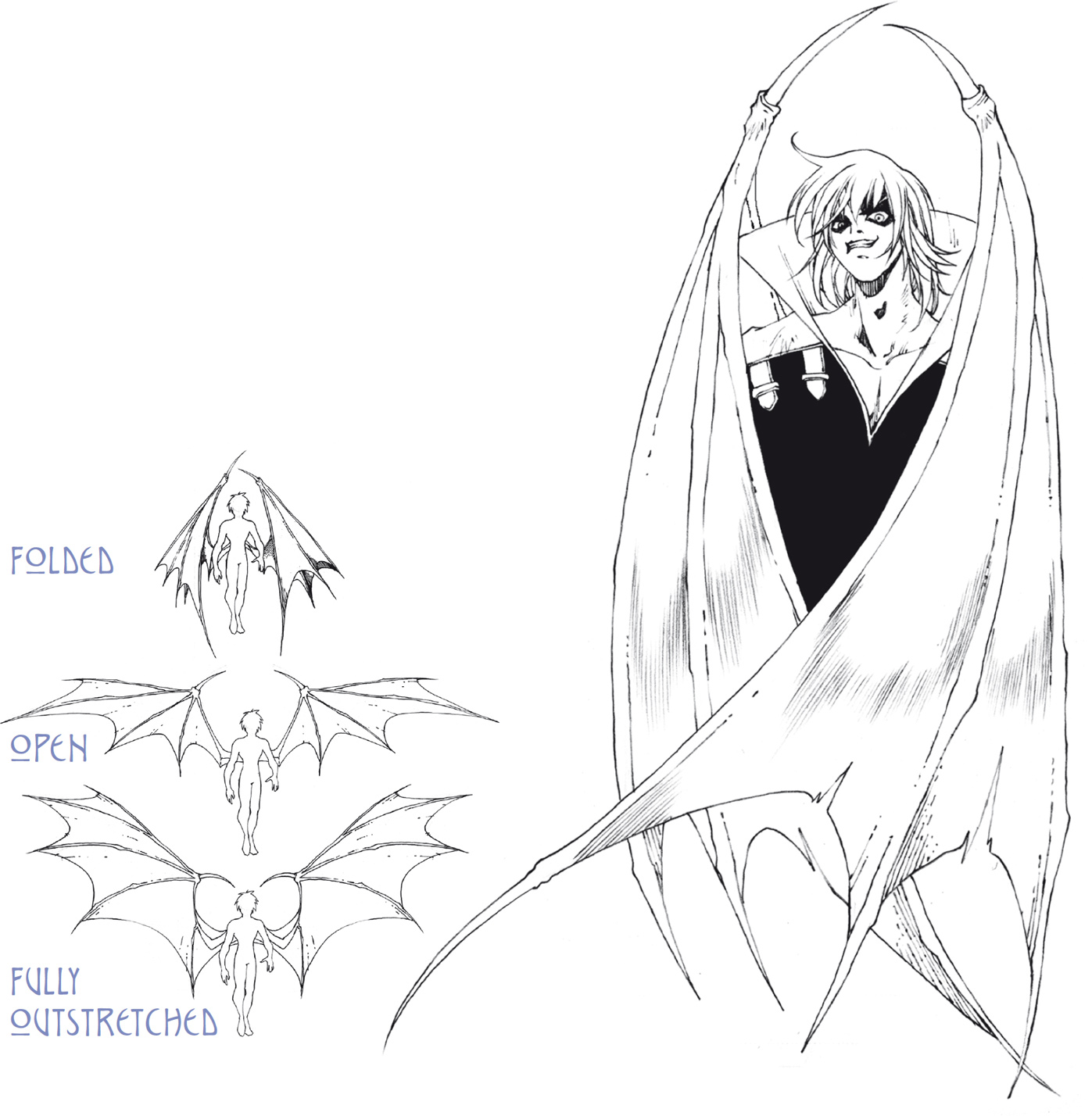
WINGS ABOUT TO UNFURL
A powerful way to introduce a dark, winged antagonist is with the wings completely closed around the figure. Then, panel-by-panel (in a comic book format), allow them to unfurl slowly, revealing the hideousness inside. This adds mystery and suspense. It also bathes the character in shadow.
FEATHERED WINGS (FOR DARK ANGELS)


The position of the wings indicates in which direction the fantasy figure is flying. In addition, when you show off the “big stretch” in the bat-style wings, nothing is more impressive. A set of these huge, bony flappers spreading out wide in each direction is sure to make even the bravest soul swallow hard. Take a look:

This is a small but extremely important hint that will add a professional touch to all of your winged characters: Turn the tips of the wings inward. This is a cool accent that imparts a sly, cunning look. But it does even more than that: It suddenly transforms the wings from purely decorative or utilitarian devices into active appendages that move in response to a character’s emotions and attitudes. And that’s the key to a great, wickedly alluring character.
These are examples of some of the many wing varieties you can come up with. Wings are like individuals: Each pair is different. You should approach them with the same creativity you bring to any other part of your character’s design.
Sometimes, the wings will mirror the character’s type. Sometimes, they’ll go “against type,” meaning that they’ll be drawn in a style that seems to be the opposite of the character’s style. These are often the most interesting wings. Imagine a shoujo-style character with gothic wings. It’s certainly not run-of-the-mill.


AGAINST TYPE (GOTHIC GIRL, MECHA WINGS)


Here’s the little secret that the manga pros don’t want you to know: One of the main reasons wings are added to female occult characters is because they add sex appeal. Think about it: How often do you really see these intoxicatingly beautiful vampires actually fly? How about never? So, what are the wings for? To create a wicked ambiance? Yeah. To carve out the occult identity? Sure. To make the characters breathtaking to behold? Ding!
Now, as a comic book artist, I want you to tattoo this on your brain: Pretty drawings are not enough. Without engaging, seductive poses, even pretty women will become boring after a few panels. On the following pages are examples of poses with flair—poses that communicate with the reader, creating almost an intimate moment. You’ll see what I mean.
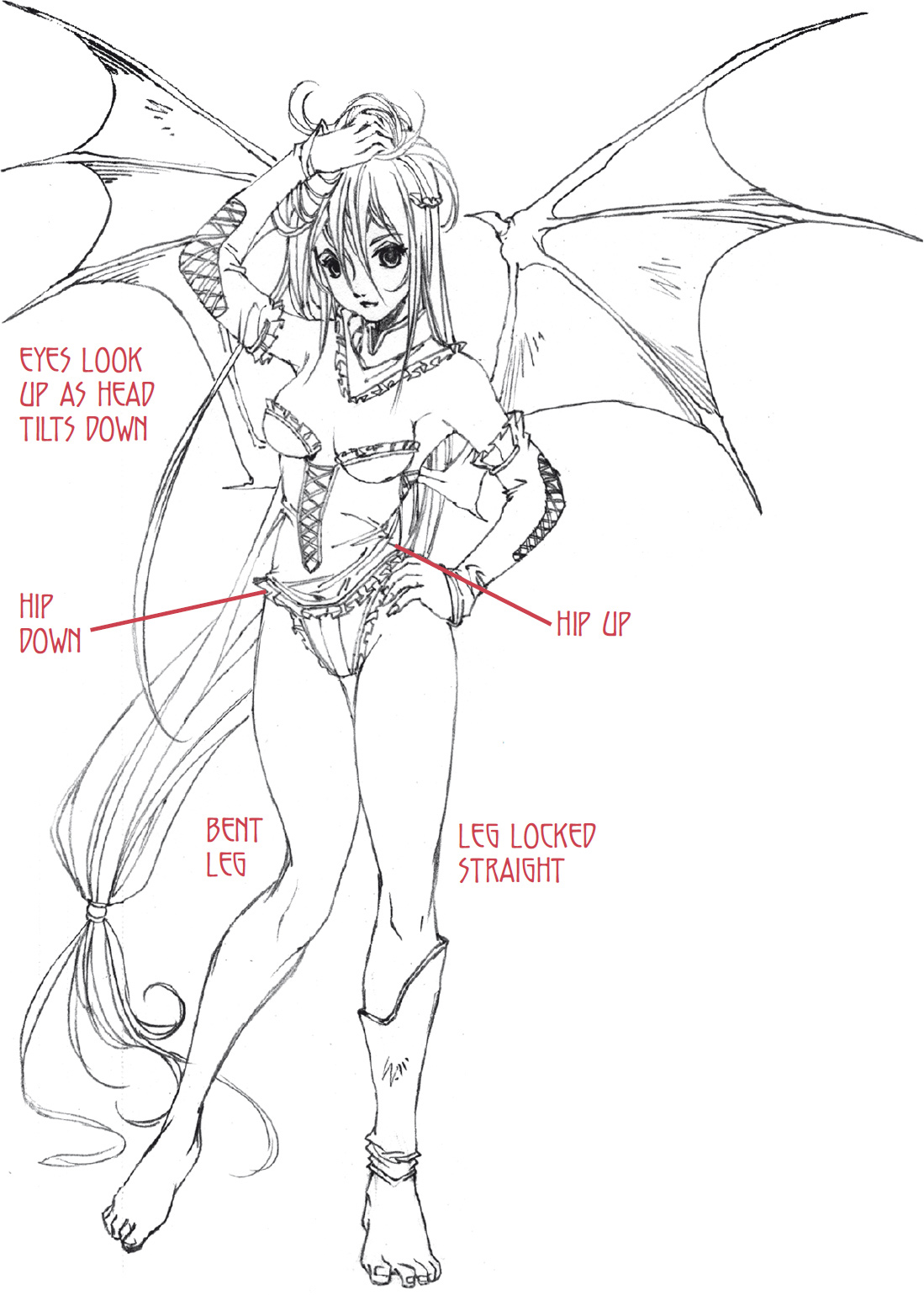






The wings can be almost as expressive as the figure itself. The subtle positioning of the wings can underscore the attitude of the pose. Even in poses in which the character is doing nothing overtly seductive, the wings make the figure emotive.



Almost as popular as the Lords of Evil, and sometimes even outshining them, are the true-blue, intrepid souls who risk everything to save us all from the rule of darkness. I’m speaking, of course, of the characters who hunt vampires, werewolves, demons, and other nefarious beasts and creatures. These fighters vary in age from young-teen (shoujo) to older-teen (bishoujo/female and bishounen/male) characters. It’s an accepted convention in manga that shoujo- and bishoujo-style hunter characters can coexist with the gracefully drawn vampire types in the occult-and-horror genre.
The most popular vampire fighter of them all is the shoujo boy warrior. His body is young, not angular with hard muscles. His head is on the large side—a sign of youth. The torso is not yet long and lean; that occurs with maturation.
He wears lots of “stuff,” since he’s fighting a demon that wants to kill him! Yet, you want him to look dynamic, even with all those forearm, elbow, shoulder, knee, and shin guards. If he becomes too bulky, he’ll look like a little porker, and you don’t want that. So, use the outline of his body as the outline of the clothing. Occasionally, folds and loose material pop up. But if you want to make the character look sleek—even with a lot of gear on—generally, skintight clothing is the way to go.


Whereas occult figures strike a slinky pose, the good-fighter type of character assumes a much more straightforward, heroic stance. The feet are spread apart and symmetrically positioned, which translates into an inner strength and stability. Elbows in with guns pointed at opposite directions is a classic look for an experienced gunfighter. If you’ve drawn this character well, she will hold up and command the reader’s attention when you put her into a full-page scene. Even though she’s still young, her determination and fighting spirit will fill the reader with confidence.




You won’t find any flowers or scrunchies in her hair. She’s an older teen out to avenge the human race—and she packs a mean side kick! It takes a lot of power to fight beasts of darkness. So, she leaps with a flying side kick, instead of executing the kick from a standing position. To make her appear more mature, de-emphasize the overall size of her head, giving it more realistic proportions than the previous shoujo characters. Also, elongate her torso, giving her a sleeker midsection.
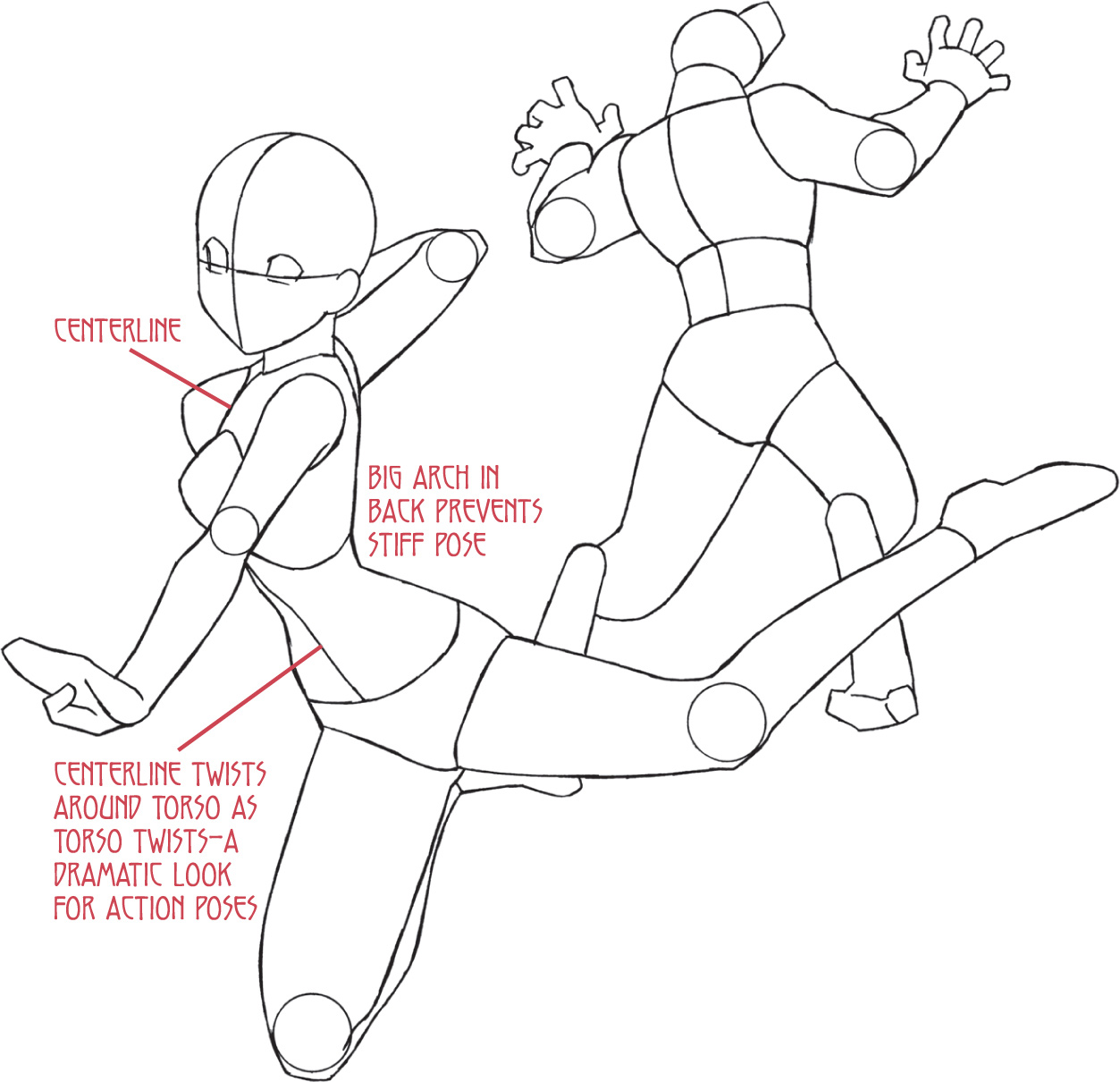
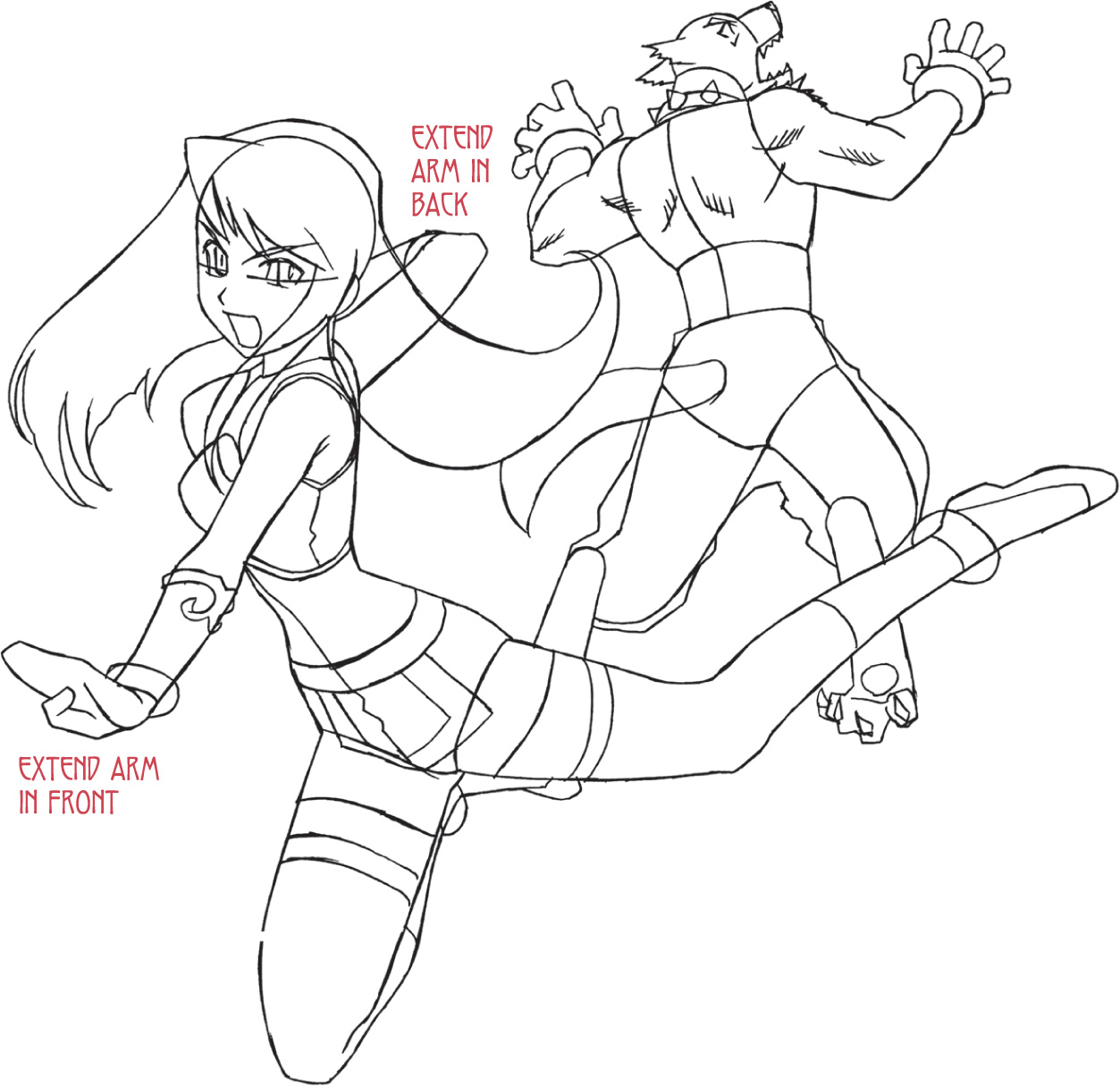

One of the most skilled characters in this genre is the trainer of beasts. He can stare down a demon and make it do his bidding. Few know his secrets.
With the bishounen-style hunter, we move up in age. This is a more elegantly attired male character. He’s tall, lean, and lanky. Note the difference between his getup and the outfits of the shoujo-style characters we’ve just seen. The more aristocratic and eighteenth century the clothing, the more clothes the character should wear. This holds true for both male and female characters. In the days of yore, people wore not only different styles of clothes, but lots more of it.
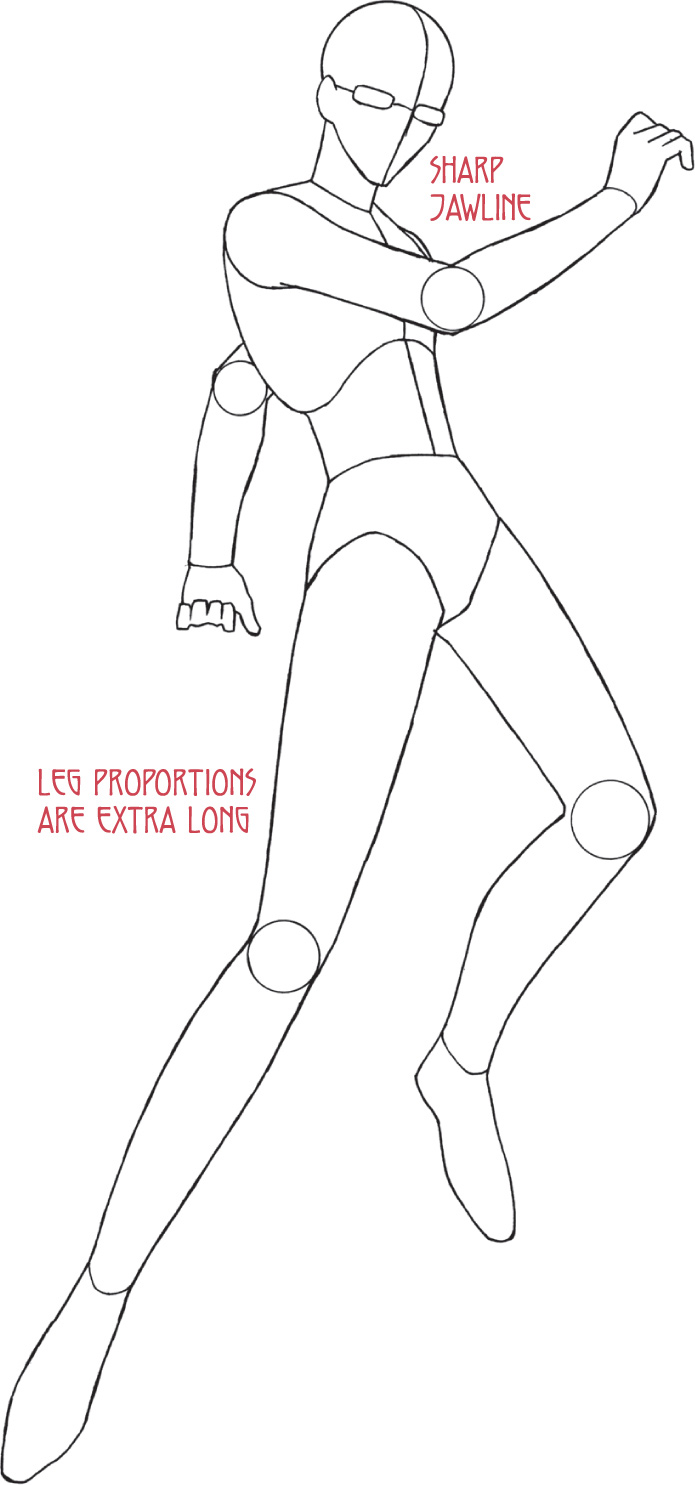
Eyeglasses are a popular, cool look on Japanese comic book characters, whereas on American characters they’re considered nerdy unless they’re sunglasses.
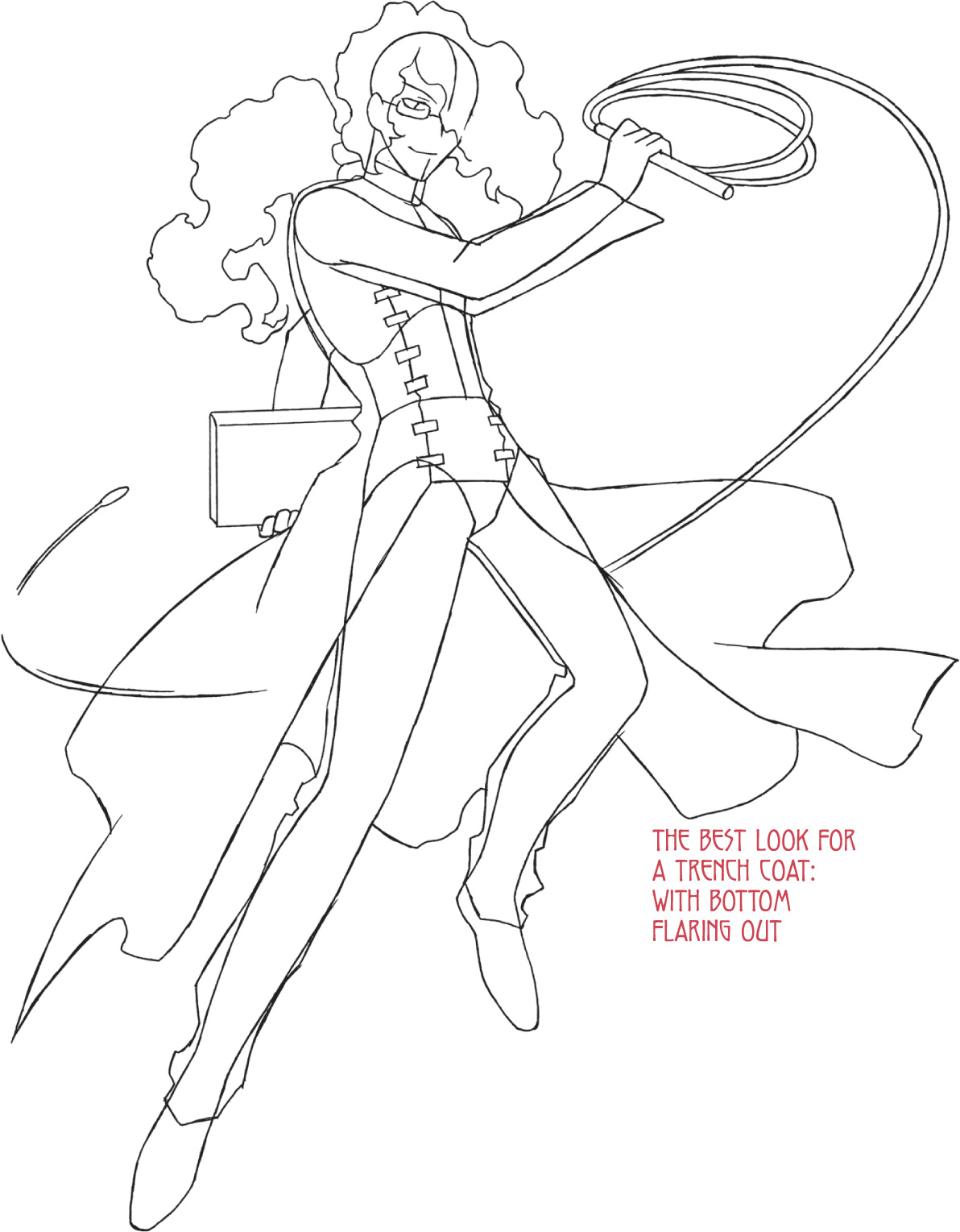
“Bumpy” hair is an authentic manga style that few American artists try to emulate. Give it a shot!
